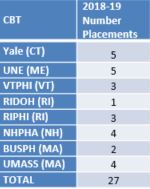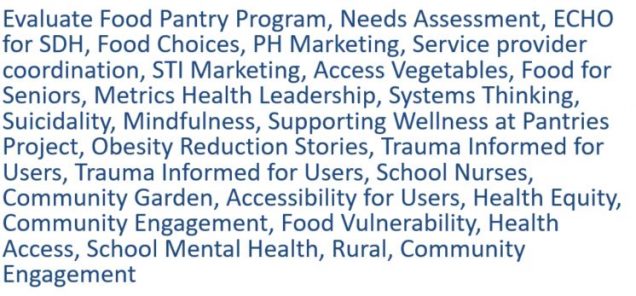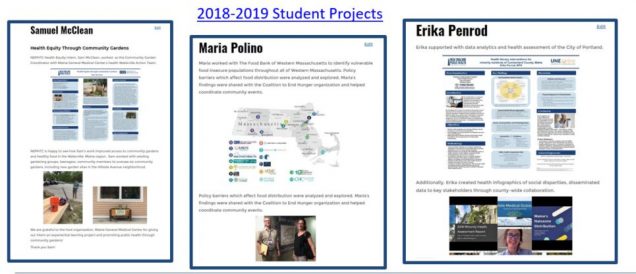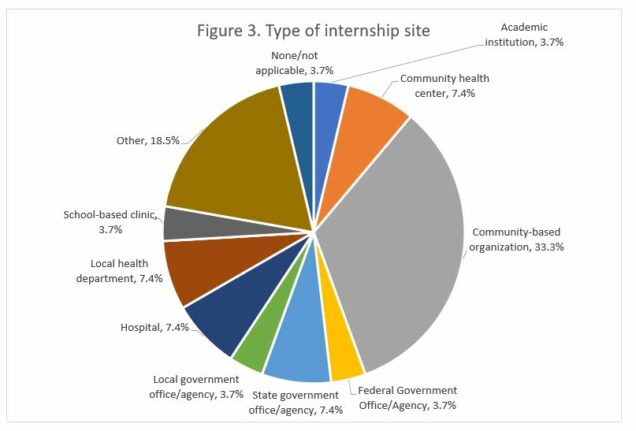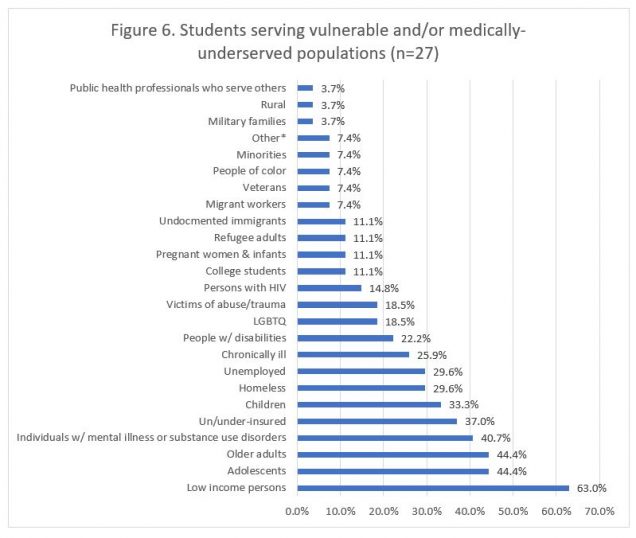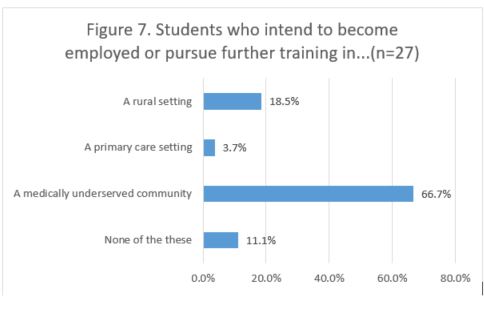NEPHTC Health Equity Interns Learn by Working on Medically Underserved Public Health Projects
In addition to training the current public health workforce, each public health training center across the country supports the emerging public health workforce by awarding stipends to current public health students in field placements or faculty student collaborative projects. At NEPHTC, we call these positions Health Equity Internships. They are managed by our Health Equity Internship Manager, Kathi Traugh, of Yale School of Public Health.
For more information on the qualifications for the interships or the agencies hosting interns, please see applications and descriptions here: https://sites.bu.edu/nephtc/students/
NEPHTC is proud that the first cohort of 27 Health Equity Interns all completed their projects by July, 2019, including for the first time, preparing a report or poster about their work.The distribution of placements across the six states of New England are show in the chart below:
The distribution of placements across the six states of New England are show in the chart below:
You can see the student name, agency name, and a short blurb about each of the 27 projects and agency by following this link:
Evaluation:
NEPHTC invests in a formal evaluation of student results every two years, with an review of the data in between, without a formal evaluation.
Here are a few highlights from our evaluation from the 2018-2019 placement year.
Descriptive information:
Students worked in a wide variety of settings, with the largest category being community-based:
All students worked on projects that ultimately benefited vulnerable/medically underserved populations In fact, nearly all students specified more than one population as being studied or served in their internship (See Figure 6). The most common population involved in student internship projects was low income persons (63%) followed by adolescents and older adults (44.4% each) and individuals with mental illness or substance use disorders (40.7%). Because projects don’t always fit neatly in a medically underserved community based on HRSA’s mapping tool, we gather information about populations served in addition to geographic location of the project work.
All students worked on projects that ultimately benefited vulnerable/medically underserved populations In fact, nearly all students specified more than one population as being studied or served in their internship (See Figure 6). The most common population involved in student internship projects was low income persons (63%) followed by adolescents and older adults (44.4% each) and individuals with mental illness or substance use disorders (40.7%). Because projects don’t always fit neatly in a medically underserved community based on HRSA’s mapping tool, we gather information about populations served in addition to geographic location of the project work.
Table 3. Student agreement (agree/strongly agree) with statements about their placement/project (n=27)
| # | % | |
| The experience I gained during the placement/project is relevant to my future public health career plans | 25 | 92.6% |
| Overall, I was satisfied with this placement/project | 24 | 88.9% |
In terms of Level 2 (Acquisition and confidence and commitment to use intended knowledge, skills, and attitudes) findings, students reported positively.
All of the students reported having identified ways in which they will apply the information they gained in their internship (See Table 7). Most also feel more confident about their ability to practice public health (92.6%) and have an increased interest in working with vulnerable/underserved populations (96.3%).
Table 7. Student agreement (agree/strongly agree with statements about the placement/project (n=27)
| # | % | |
| I have identified actions I will take to apply information I gained from the placement/project | 27 | 100.0% |
| Overall, the placement/project increased my confidence in my ability to practice public health | 25 | 92.6% |
| My placement/project experience has increased my interest in working with vulnerable/underserved populations | 26 | 96.3% |
In fact, a majority (66.7%) of students indicated that they are interested in pursuing employment and/or additional training in a medically underserved community (See Figure 7) below.
